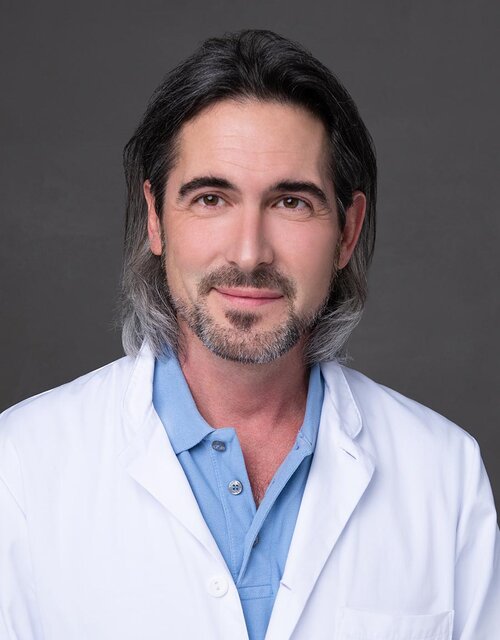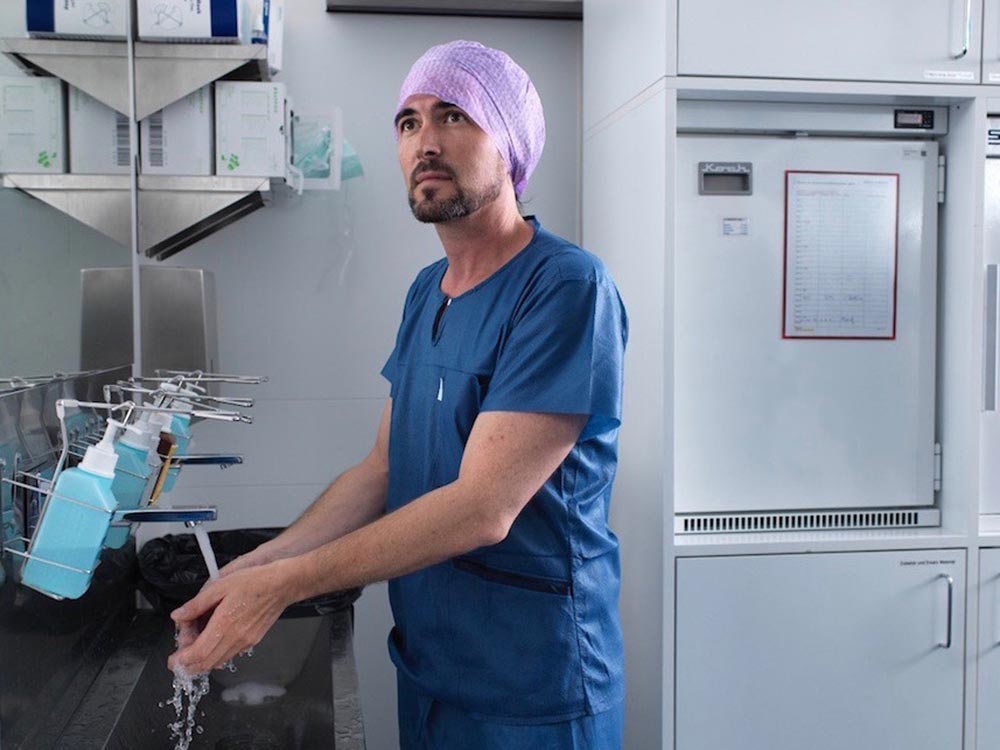Interview with Prof. Dr. med. Christophe Wyss

Prof. Dr. med. Christophe Wyss – Interventional Cardiology – HerzKlinik Hirslanden
Many factors influence heart health. Cardiologists agree that sport and exercise are good for both healthy and diseased hearts. However, as is so often the case, it all depends on the right dosage.
If you get enough exercise, you can prevent secondary damage that can be dangerous for the heart. “Obesity, blood sugar, blood pressure and cholesterol are major risk factors for coronary heart disease such as blockages in the coronary arteries and heart attacks,” explains cardiologist Christophe Wyss from the Hirslanden Heart Clinic. All four risk factors can be positively influenced by exercise, a healthy diet and not smoking.
How much exercise is enough for the heart?
But how intensively and how often should you exercise if you are neither a super athlete nor an exercise fanatic? To reduce the risk to the cardiovascular system and maintain heart health, the European Society of Cardiology recommends 150 minutes of moderate exercise or, alternatively, 75 minutes of intensive exercise per week. Moderate means, for example, dancing, brisk walking, vacuuming, mowing the lawn or golfing. Intensive activities include jogging, cycling, swimming lengths or even a singles match on the tennis court. What sounds like little quickly becomes a challenge in everyday life. “30 minutes of moderate aerobic exercise five days a week – that’s hardly feasible for many people,” confirms Wyss. That’s why he recommends that couch potatoes incorporate as much exercise as possible into their daily routine. “Take the stairs instead of the elevator” or “get off one stop earlier” are tried and tested classics.
Not from zero to one hundred
Anyone who suddenly has the idea of signing up for the marathon in New York at the age of 50 because their body has been neglected over the last ten years is taking a risk. “High exertion from a standing start is dangerous for an untrained body,” Wyss clarifies. However, the heart attack patient is by no means always the smoking, overweight diabetic of advanced age. Hard physical exertion can also provoke a heart attack in well-trained athletes. For example, if there are undetected congenital malformations of coronary arteries or undetected heart muscle diseases. “40 percent of heart attacks are due to a genetic predisposition,” explains Christophe Wyss. And despite intensive research, cardiology still knows very little about the genetic causes.
Know your individual risk profile
The individual risk of heart attack can be examined in a cardiovascular consultation. The cardiologist compares blood pressure, cholesterol profile, family history, smoking status and other factors with comprehensive databases to determine a statistical 10-year risk profile. “These profiles are statistical probabilities, not absolute predictions,” emphasizes Wyss, “but they can still be useful for men over 40 and women over 50.”
What happens after a heart attack?
While doctors used to automatically prescribe rest and protection for heart patients, we now know that heart attacks and sport are not mutually exclusive. On the contrary. “Exercise reduces the risk of relapse, shortens the recovery time and promotes overall health,” emphasizes Wyss. However, exercise should take place under supervision and in consultation with the doctor treating you, as the type and severity of the heart attack or heart condition determines the intensity. Heart groups (see swissheartgroups.ch for a list) also have a very good effect after a heart attack. According to Wyss, these group training sessions are not only useful after a heart attack, but also as an effective preventive measure, especially for people with a high risk profile.
(Text source: Clau Isenring)


